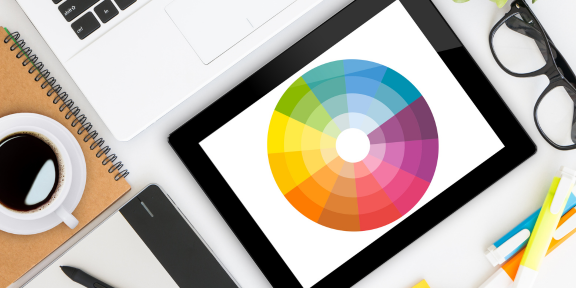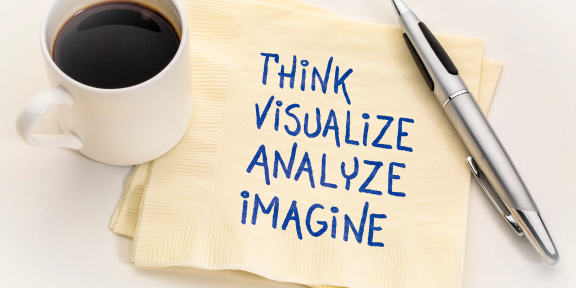If you are stuck visualizing your goals, consider a different perspective. Consider looking at things from a very structured and analytical point of view. Using common design techniques can be one of the most productive ways to map and visualize your goals.
Your life is your greatest project. Taking some time and focusing on your life design can pay dividends. Personally, and professionally. Let’s get started.
What Is The Design Process?
The design process is a powerful problem-solving system that allows anyone a structured approach to the project. This process is generic enough to be used on a variety of projects while still giving anyone the opportunity to map and visualize their goals with a consistent methodology.
What’s nice about this process is that each step must be completed before the next. Find comfort in the idea that half of your planning is already set up for you. All you need is to know where you want to go. In this process, things should be carefully considered to reduce rework and lost time through oversights and errors. Whether you are on step one or at the end of your journey, don’t forget to enjoy the ride.

The Design Steps
Define The Problem (Preliminary Design)
As a designer, the problem-solving process involves treating a goal or objective as a project. The initial step of any design process is identifying the current state (version 1.0) and the desired future state (version 2.0).
This preliminary design step is the opportunity to identify a goal or problem no matter how big or small. The best goals are ones that you can see clearly. The clearer your goal, the easier it will be to progress through your next steps.
Generate Ideas and Concepts (Schematic Design)
Once you have your project figured out, you can shift into thinking about how you are going to get to your goal. How are you going to get to your 2.0. Some designers refer to this as a schematic design phase.
The schematic design phase is a brainstorming session. All your thoughts and ideas are being noted and placed into one place.
Do you need to learn new skills? Do you need to shift your routine? What tools do you need to reach this goal etc? Anything and everything you can think of should be written down at this time.
Build Your Road Map (Design Development)
So, now we have a project, and we have ideas and concepts on how we are going to get there. Consider this as a design development phase. In this phase, your focus is creating a roadmap.
Be specific and detailed here. The more small goals you have, the faster you will see the progress which will help keep you motivated. We will talk about some tools later in this article that can help you create a road map, and develop sub-goals to help you visualize your end goal.
Take Action (Implement Design)
With your road map laid for you, it’s time to get started. The implementation phase.
This is the easiest part in terms of planning, but the most difficult in actual action. Implementing your actions requires a lot of motivation and self-accountability. Assign an accountability partner and make sure they follow up with you on your progress.
Keep your goals nearby so you can check back on them and make sure you are keeping on track. The challenge with this step is keeping motivated. Motivation can come in many different ways. Find yours and make sure you revisit this often as you implement your goal design.
Refine and Adjust (Design Improvement)
Improving is a part of our lives no matter what we are doing. For goal design, this is a way to keep you on track and to get to the end goal faster. Refining your process is a process in itself. Be ready to learn what not to do before settling on the perfect route to take.
Think of the GPS on your phone. If you plug in a trip, from a high level, the route might look smooth and streamlined. However, once you zoom in you see all the turns and road changes you have to take to get to your destination. Your goal journey will be no different.
If you are continuously finding yourself being stuck on a particular aspect of your road map, alternate routes, and courses is something to consider. Don’t think of them as a distraction, but finding a new means to an end.
Though this is the last step, this one is never really over until you achieve your goal. There is always an opportunity to improve and iterate your process to help you get where you are going quicker and more efficiently.

Tools You Can Use
Mind mapping tools are invaluable for anyone utilizing the design process for their goals. They provide a visual representation of the key elements and steps required to achieve a particular goal, helping to clarify the sequence of events needed to go from point A to point B.
The visual nature of mind maps allows users to easily organize and prioritize tasks, identify dependencies, and spot potential roadblocks or gaps in their plans. Mind mapping tools facilitate brainstorming and ideation, as users can quickly capture and organize ideas related to their goals. This enables users to generate creative solutions, explore different possibilities, and make informed decisions about the best approach to achieving their goals.
Here are some popular mind-mapping tools:
XMind
This tool is popular for mind mapping and brainstorming. Create visual diagrams to map goals. The tool allows you to create branches and sub-branches to keep your goals organized and allow you to create different aspects of goals.
Excel or Google Sheets
Create tables, charts, and graphs to visualize and map your goals. These spreadsheets can be used to track milestones and progress toward upcoming deadlines. Spreadsheets also have the ability to edit cells to automatically update percentages or progress meters so you can stay motivated as you watch your progress grow towards 100%
Goalify
This goal-setting app keeps your goals well documented and structured in a visual manner. Goalify provides you with dynamic reminders and customizable notifications to help you stay accountable and keep you motivated.

Why Use Design Techniques?
Design techniques can accomplish a variety of complex problems by breaking them down into manageable and sequential steps. This is beneficial to anyone trying to achieve personal goals. Whether these goals are long-term or short-term, breaking them down and using design techniques can help. These are just a few perks of incorporating design techniques into your goal design.
Clarity
All goals, especially long term goals, can be overwhelming and confusing to figure out exactly what to do next. Design techniques can break down the “big picture” long-term goal into smaller step-by-step pieces.
Also, find small nuances and connections between steps you might have otherwise missed only by looking at the big picture.
Focus
We live in a world of instant gratification. The answer to any question we would ever have is at the tip of our fingertips. For instance, we can hear our favorite songs by simply saying “hey Alexa, play Elvis”. With all these distractions and things competing for our attention, staying focused can be difficult.
Design techniques help you map and visualize design goals by helping you narrow down what is important and what is a distraction. Visualizing the goal and identifying the items that are keeping you from it is a powerful iterative step in the design process.
Creative Solutions
If this design process is anything to you, it should at least help you become more creative. Use this creative process to look at your goal from a variety of viewpoints. Explore different patterns and find new tools you can use to work towards your goal.
Staying Motivated
If you are like most people, then staying motivated is maybe the most difficult challenge in achieving anything. The design method can be a great help for this because you are not looking only at the end result, you are looking at much smaller and easier-to-achieve elements. There is an expression that says “you over estimate what you can do in one year, but underestimate what can be done in 5.”
Meaning its easy to want to get to the big picture result as fast as you can. If thats all you focus on, it will take longer than you think. Instead focusing on the smaller items and youll be surprised how quickly you can make progress.
Prevent yourself from getting bored by utilizing design techniques to map and visualize your goals and you will be happy to start a “new” goal every few weeks.
What If I Am Not A Designer?
If you think to yourself “I am not a designer, I have no business in design” you have nothing to fear. The design process can still be used to map and visualize your goals. Fortunately for you, these steps are simple to implement and with a little practice, you can be a life design professional in no time!

Advice For A Newbie
Some of the most important pieces of advice for someone coming into the design space for the first time are:
Research
Before you dive headfirst into a design process, take some time to do some research and learn how others have solved their problems in the past. Consider how they thought of and identified their problem, how they made their own map, and how they are iterating and changing their process as they move on.
Talk To Other Designers
If available, talk to a designer or engineer about how they would use the design process if they were in your shoes. They might be able to provide a totally different viewpoint than you are considering.
Since a designer works on the design process every day they will have valuable guidance on how to take a problem and get to a solution. They might also have tools on how to get there.
Learn Design Principles
Knowing the ins and outs of each step will help you graduate to a higher level of understanding quickly. The more you know and understand the importance of each step, the faster you will level up and can start to leverage and work the angles of each step.
You will also be able to have the foresight to think a step ahead of your current goal and know how you can set yourself up to succeed quicker in the next.
Know How To Iterate
Iterating a concept is a key principle to design. Knowing how to do it well will help you achieve your goals quicker and more effectively. Take the time to see how others go through an iterative process and how they test and tweak aspects of a design.
The Wrap Up
The world of design can be used on much more than buildings and websites. Using the art of design for you life is a great way to systematically address major changes you want to work towards personally or professionally.
By working through each step in a systematic fashion, you will soon be able to accomplish more in less time. The next time you want to start and execute a goal, consider running through the design sequence.

Joe Mac
Joe is a licensed engineer, a designer, and a content creator. The last 8 years in the consulting industry has taught him alot about design. He uses his experiences to design his own projects and personal goals. When he is not designing buildings or website wireframes, you can find him in his woodshop, out on horseback, or out in the woods. If you are interested in learning more, check out his personal blog: www.thejoemac.com.
Comments
0 comments



